Fencing practice is a key to fencing success
 Warmups
Warmups
Fencing practice starts by getting the body revved up for action.
 Footwork
Footwork
Footwork is an essential part of any fencing practice.
 Drill/Lecture
Drill/Lecture
This is where fencers increase their fencing knowledge and skillset.
 Open Bouts
Open Bouts
Every fencer’s favorite part of fencing practice.
 Visit Us
Visit Us
Visit one of our fencing practices in Hopkins/Minnetonka or contact us to help you find a club near you.
Fencing practice, practice, practice.

Musicians have heard the somewhat humorous idiom, “How do you get to Carnegie Hall? Practice, practice, practice!”
Fencers could say the same thing about getting into the top eight at regionals, nationals, or the Olympics. Fencing, practice, practice, practice!
Practice is where most people will participate in the sport for the first time. The Practice Pillar (read about all three pillars HERE) is made up of four core parts, each vital to improving a fencer-athlete:
- Warmups
- Footwork
- Drills/Lecture
- Open Bouting (the matches fencers compete in)
I was young once!
TRUTH – – – The truth is if I were to ask our entire team, or any fencer anywhere, what their favorite part of practice is, I’d get a chorus of fencers chanting “open bouts”. You bet. Why not! That’s game time! That’s where the rubber meets the road. That’s when they get to actually fence. We hear it all the time, “Can I do bouts?” even at the beginning of practice. I get it. I was once a young fencer, and I hated footwork as much as the next kid.
As I have gotten older and coached YEL Fencing Club athletes to higher and higher fencing levels, I have come to appreciate each of the three other parts of practice (warmup, footwork, and drills/lecture) for their own merits. Now, I’m going to sell you on the reasons why all of these are incredibly important for fencing development.

The 1st element of fencing practice: Warmups
Let’s go right in order, and start our fencing practice blog with the element any standard fencing club would start with. That is warmups. A ton of new people are shocked when they try fencing class for the first time and find out that fencing is actually a sport and not just a class about sword fighting. Fencers are athletes, and just like any athlete, they have to be in great shape to perform at the highest level. Now a given day of practice might focus on all or just some of the exercises we will discuss below.
Leg Strength
For fencers, leg strength is emphasized heavily because it is where many of their explosive attacks originate. In addition, leg strength keeps the fencer fresh during a DE (direct elimination) bout that goes to 15 points. Here, fencers continually move quickly up and down the strip to control distance and set up lightning-fast attacks.
Leg exercises here might include squat jumps, hurdle obstacle courses, ladder drills, and more.
Core Strength
Core strength is also important for body control, which is what makes high-level fencers look so graceful and smooth when they are moving up and down the strip. Body control helps improve your accuracy and your efficiency of movement which increases speed. Most people who are newer to the sport don’t realize that a lot of the time the people they are fencing are NOT actually that much faster or stronger then they are but they ARE so much more efficient with their movements and this gives the illusion of speed (though, they are pretty darn fast too).
Core exercises might include planks, supermans, sit-ups, leg lifts, and more.
Upper Body
Fencers will, of course, work on their upper body as well. These are the muscles that will be holding and using the blade in a match. Here again, I usually find misconceptions when I am working with new students. Many of them think that to move their blade quickly, they need to be very strong, and they put their whole body weight into a parry or an attack and end up flailing all over the place. This is incorrect. Fencers’ blades are the fastest things at the Olympics besides bullets, but they don’t get that through giant arm muscles. We want to be strong of course, but not with giant bodybuilder muscles, those will just slow you down. What we want to develop is strength and speed through efficient movement, not just being stronger than your opponent.
Upper body exercises might include pushups, tricep dips, and mask-on-the-blade extensions.
Cardio
Lastly, warmups will usually include some element of cardiovascular exercise. Fencing tournaments can and do go all day, and some athletes will have multiple events on the same day. Cardio increases an athlete’s ability to recover from their exertions in each bout and not be so tired that it affects their skills in their next match.
Cardio Exercises might include jogging, sprints, and relay races.
The 2nd element of fencing practice: Footwork
Now, we will discuss everyone’s favorite part of practice: footwork. Of course, I am kidding. Everyone hates footwork. It can feel redundant and boring. Many athletes feel that once they have a pretty decent understanding of the basic advance, retreat, and lunge (three of the introductory footwork skills), they don’t really need to do much more of it in their practices.
Although footwork seems boring, it is often a demanding workout, especially when it takes place right after warmups, which is what happens at most clubs. Footwork just stinks. Are you with me? I said, “Are…you…with…me??!!??“

Footwork is the place to improve that efficiency and control that we talked about so much with the warm-ups with actual actions that you will use in a bout. Your feet are what control the distance of your actions. Speaking from personal experience, distance control is, without any doubt, the most important skill to have in fencing. I have seen people who have far less technical skill than their opponents win their bouts because they are the ones using their footwork to control when and where the actions take place.
Footwork practice develops the technique that will help you develop the skills to control distance. Read that sentence again. (“Footwork practice develops the technique that will help you develop the skills to control distance.”) Good job. That might sound a little confusing. It might sound like a coach justifying that boring old footwork again, huh? What do I mean to develop techniques that will develop skills? Why not just develop the skills?
Make a cake
Let me draw up an analogy for us. Let’s imagine for a second we are going to bake a cake with a little kid. This kid doesn’t know anything about baking. If I say: “Cake includes flour, eggs and sugar. Go get some and mix it all together.” And if that’s all I say, the odds are we aren’t getting a good cake. The kid doesn’t know what to do. He knows that there is flour, sugar, and eggs involved but not how much or how little. He might make something edible but that would be lucky, not something he did on purpose.
Now, if I took that kid and showed him how to measure the ingredients and how to determine how much we need of each thing, THEN I said, “OK, make the cake,” we would get a good cake. That’s kind of what footwork skills are about. Advances, retreats, and lunges are all a part of it, but knowing how much of those you need and when and where you will use them will be what helps you use them to win a bout.
Cakes are not JUST flour, sugar, and eggs. They are a SPECIFIC AMOUNT of flour, sugar, and eggs. Footwork isn’t just advances, retreats, and lunges, etc.…; it’s controlled and efficient advances, retreats, and lunges, etc.… When you have good footwork, it’s going to give you the BEST way to control your body and distance in about. And the only way to have that good footwork is to practice it.
The defense rests.
The Third Element of Fencing Practice: Drills/Lecture
Drills are the first of the core parts that might be a fencer’s favorite part of class. Drills are best used to introduce to a large group a new idea or a concept that you want everyone to work on. Now notice, I said introduce, not perfect. Perfecting a technique is done best in a lesson with a coach or, depending on a skill, in a bout, but a general introduction to most skills will probably happen in practice.
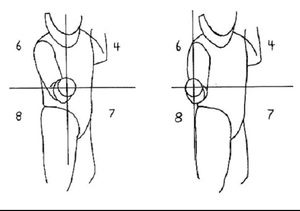
Attack lines of fencing.
This could be as simple as discussing the various lines of attack in fencing. Your coach may ask you to sit down and draw a diagram of a fencer to illustrate where four, six, seven, and eight are located on the body. This introduces the concept of the different lines to everyone, enabling the coach to provide more specific instructions about the movements or actions they want everyone to perform.
Maybe the practice will be about improving a specific thing, such as distance, and you play a game like your-turn-my-turn where no parries are allowed, and the most forward movement a fencer can take is two advances and a lunge.
Perhaps the coaches have noticed that fencers at your club don’t parry riposte enough, so they let everyone fence 15 touch bouts, but parry ripostes are worth 3 points.
Your coaches might decide that they want you all to work on your abilities as referees so they have everyone get into groups of 3 and move through bouts with 2 people fencing and one refereeing.
You might run into any of the above on any given night of practice.
Hey, Coach Paddy. What about advanced fencers? Huh? What about them?
Oh, I can see what you are thinking. “Well, what about more advanced fencers who have been introduced to this stuff already? Is there no point in drills or lectures for them?”
Great question. The answer is…YES! Drills and lectures have a purpose, even for advanced fencers.
One, it never hurts to go over a concept again, and if you are doing a competitive drill with people who are your level, you should be trying to push yourselves as hard as you can to further develop the skill that you are focusing on.
Two, if it is something very simple like going over different parry ripostes, that is a great time for a more advanced fencer to look for a newer, less experienced fencer to partner with to help them get a better understanding of the drill. Doing this helps that new person advance quicker and will result in hopefully another person for the more experienced fencer to fence with soon.
The Fourth Element of Fencing Practice: Open Bouts
This is what all the fencers get out of bed in the morning for. This is where there rubber meets the road. It is everyone’s favorite part of practice. Where we get to bring all of our skills to bear in a bout without any restrictions. It’s fun, yes. I think one of the main problems for most fencers, though, is they get to open bouting and think that the hard work is over, and now it’s the fun, the easy part.
the road. It is everyone’s favorite part of practice. Where we get to bring all of our skills to bear in a bout without any restrictions. It’s fun, yes. I think one of the main problems for most fencers, though, is they get to open bouting and think that the hard work is over, and now it’s the fun, the easy part.
They survived warmups and footwork. They made it through the drill of the day, and now it’s a fun time. This is not entirely correct. Now, don’t get me wrong, open bouting is fun. But it is a large mistake to think of it not requiring hard work.
Open bouting is the time an athlete should be the most focused. They should be focused on using whatever actions or skills they are working on developing and building it into their style. Whether it’s from a private lesson with a coach or something they picked up on from a drill, the best fencers will be focused on getting the action down successfully in their matches.
If you do open bouting with your friends and your mind is blank, and you are not actively thinking about the match, what moves you want to make, and how you want to execute them, then you are wasting time. Open bouting exists to develop your actions into real success in matches. To do this, you must be focused and think about every. single. action. that you do.
If someone scores on you, why? Was that a mistake in what you wanted to do, or did they do something right? Why did the last action you just set up fail? Why did it work? How can you do it again? What is your opponent doing? What are some actions you have that will work against it? If those actions aren’t something you are working on, how can you manipulate the bout into a place where you can use those actions?
Those are the types of things that should be going through your head. You should be totally focused, almost like a robot, on developing and improving during open bouting. It is NOT free-play game time. Not if you want to make the most out of it and grow as a fencer.
Bouting is awesome, but all four parts of practice are important for an individual’s growth and development. The most important thing to remember is that no part of practice should be without hard work and focus—not the warmups, not the footwork, not the drills, and not even open bouting. It is PRACTICE, after all. If you aren’t practicing something, what’s the point?
In the next post, we will discuss the second pillar of fencing: the private lesson. That is where perfecting your technique and developing what we call a “Style” will begin. See you there!
Visit Us
Do you want to learn more about fencing? Is your child looking for “their” sport? Fill out the form below and set up a time to visit us at the YEL Fencing Club, where we foster a welcoming environment that is focused on camaraderie, competitiveness, and participation.
YEL Fencing Club Inquiry
We'd love to meet you! Fill out the form below and we'll schedule a time to talk and take a tour of the YEL Fencing Club facility.
Leave a Reply
Want to join the discussion?Feel free to contribute!

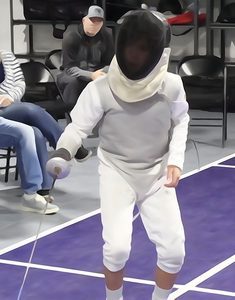


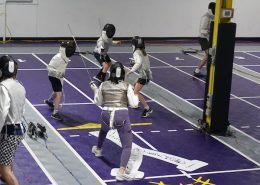 2023 YEL
2023 YEL
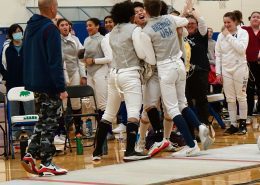

 2019
2019
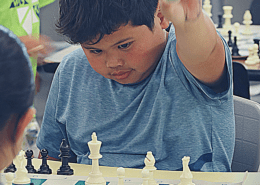 2019
2019

 ©2019 YEL
©2019 YEL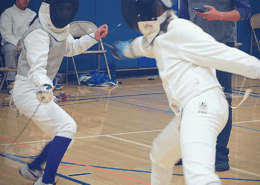
 ©2019 YEL
©2019 YEL

 ©2024 YEL
©2024 YEL ©YEL 2024
©YEL 2024
https://shorturl.fm/SKlWt
https://shorturl.fm/5jDjD